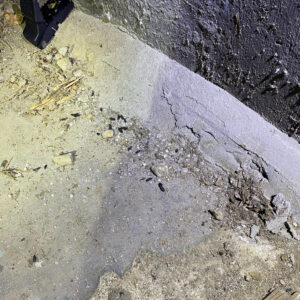Tiny Droppings, Big Hazards: How to Identify and Remove Mouse Poop in Your Home

Even though mouse poop may sound like a funny topic, it is actually one of the most dangerous parts of a mouse infestation. Mice and rodents typically don’t bite people at random like other pests such as mosquitoes, bed bugs, or ticks—their droppings are how they spread disease, contaminate food, and wreak havoc on your health and peace of mind. Today, we’ll cover everything you need to know about mouse poop, its hazards, and how to keep your home free from its risks.
How Can You Tell If Something Is Mouse Poop?
The easiest way to tell if something is mouse poop is by its shape and size. Mice droppings are thin and average ¼ inch in length. The best comparison is mouse poop looks very similar to dark or black rice. Location is also a good indicator of if something is mouse poop. Mice tend to spend their time in dark, isolated spaces or where there’s food. The most common areas for mouse droppings include:
- Pantries

- Cabinets
- Closets
- Attics
- Crawlspaces
- Air vents
- Exposed pipes
- Holes in your wall
- Garages
- Under furniture
You may even find mice droppings in your refrigerator if they’ve found a way inside!
What Can Be Mistaken for Mice Droppings?
One of the hardest parts about identifying mouse droppings is other pest droppings can look similar—especially roach droppings and rat droppings. The main difference between these are going to be size and shape; location won’t change much since rats and roaches will hide in similar places as mice.
Rat droppings can be identified because they are wider and longer (sometimes up to an inch in length) than mouse droppings. If mouse poop looks almost like rice in shape, rat poop has a more sausage-like shape.
On the other hand, cockroach droppings will usually be smaller than mouse droppings; however, if the roach is big enough, mice and roach droppings can be the same size. The main way you can tell the difference between them is by their shape. Mouse poop will be pinched off at the end, forming a little point, or will have mouse hair stuck in it. Cockroach poop resembles pellets in shape and is more rounded.
Are Mouse Droppings Dangerous?
Yes, mouse droppings in your house can be dangerous, especially if they are near food sources. Rodents such as mice and rats are known for spreading diseases, but what you may not know is the main way these diseases are spread is through their droppings. Mice can either contaminate your food supply or viruses and bacteria from the infected droppings can get into the air of your home and make you sick. Some of the illnesses that mouse droppings can spread include:
- Hantavirus Pulmonary Syndrome
- Salmonella
- Rat Bite Fever
- Lymphocytic Choriomeningitis (LCMV)
- Leptospirosis
Why Do I See Mouse Droppings But No Mice?
You may think that if you’re not seeing mice, then you don’t have a problem. But the presence of droppings alone can point to a mouse infestation in your home. If you’re seeing droppings but no mice, there’s likely a nest hidden somewhere in your house, and the droppings are where they’re visiting most often. Mice are sneaky pests and nocturnal, so you may not see them as they’re most active at night and avoid crowded or loud spaces.
What to Do If You Notice Mouse Poop
The CDC has recommended instructions on what to do if you notice mouse poop. These instructions are as follows:
- First, put on protective gloves like rubber or plastic.
- Use a bleach solution or an EPA-registered disinfectant spray to get the poop wet. Let the solution soak for five minutes, or follow the disinfectant instructions on how long it should sit.
- Wipe up the mouse poop with paper towels.
- Dispose of paper towels in a covered garbage that will be emptied soon. If you have a trash bin outside, use this one instead of the one in your kitchen, bathroom, or living spaces.
- Clean the area again with a disinfectant. You may want to also take the time to clean all hard surfaces near the area and or investigate the rest of your house for contaminated areas.
- Wash gloves with soap and water before removing them from your hands.
- Wash your hands with soap and water after removing gloves.
Once the area is cleaned, you’ll want to call in a pest control technician to investigate your house for a mouse infestation. Remember, seeing mice droppings likely means you have a nest in your home—avoid health risks as soon as possible by having a trained pest control company like F&W remove mice at the source.
Is It OK to Vacuum Mouse Droppings?
You should not vacuum mouse droppings. Vacuums can cause the air-borne viruses and bacteria on the droppings to be dispersed, increasing your risk of breathing contaminated air in and getting sick. Follow the CDC instructions above to clean up mouse poop safely.
Get Rid of Mice with F&W Pest Control
With the risks of disease and contaminated food, you don’t want to let a mouse problem linger in your home. The only way to ensure your house is rodent-free is by having a rodent control professional conduct a thorough investigation, implement a strategic extermination plan, and regularly provide preventative measures.At F&W, we’ve been in the pest and rodent control industry for almost 90 years now. We’re the experts in finding nests and getting rid of rodents from the source. For long-term protection, we offer our customers a monthly payment plan that covers both emergencies and preventative maintenance. Trust your home to the experts in rodent control in Massachusetts, and get your free quote from us today!


